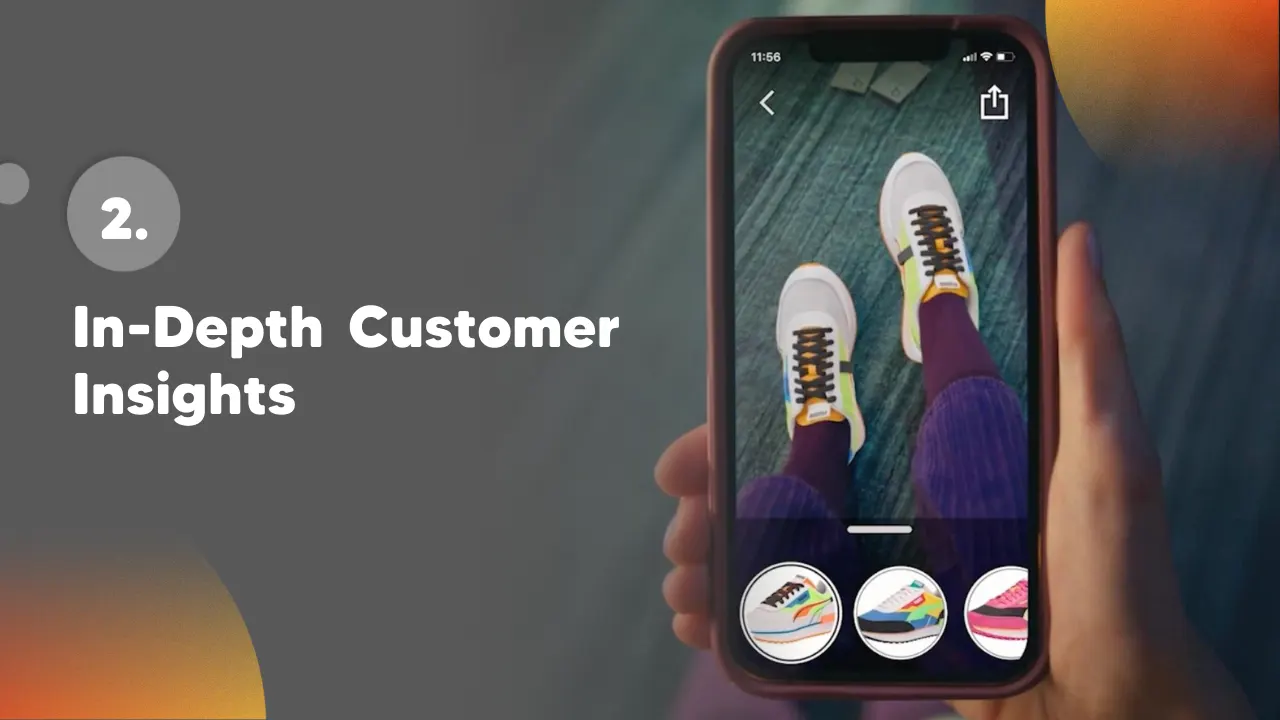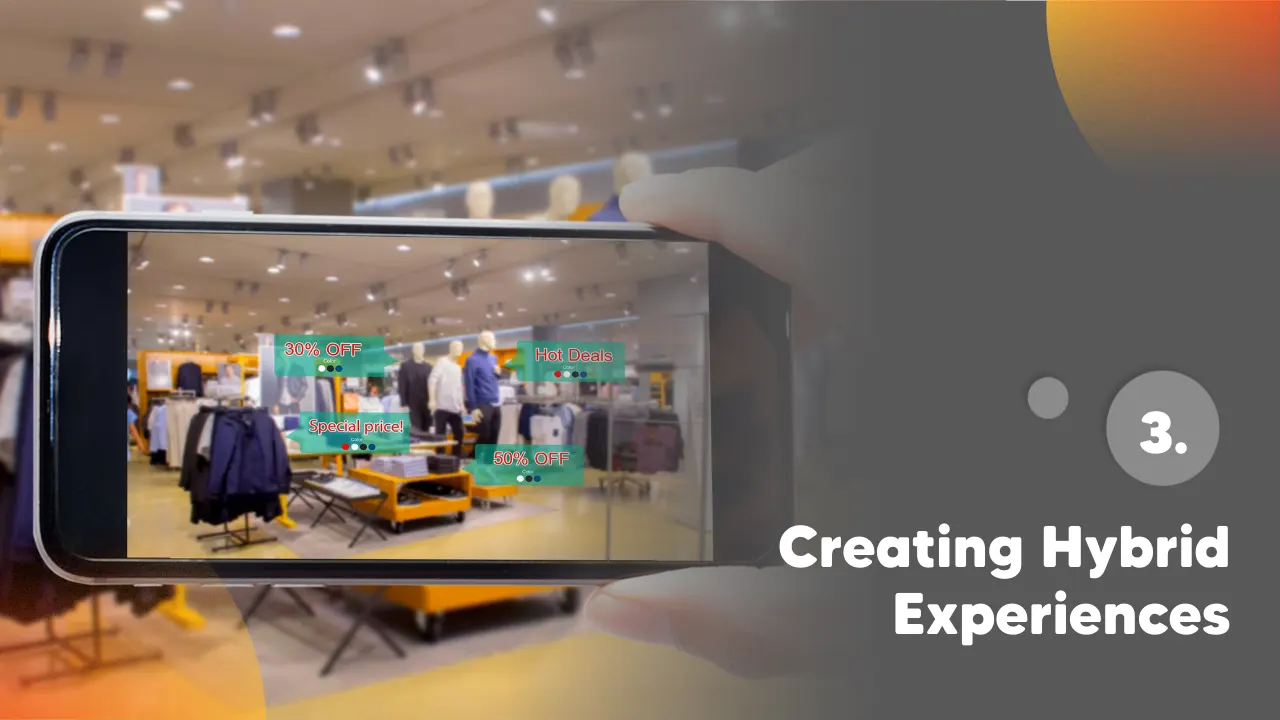🗣 Increasingly, XR is evolving to become a lot more than just an entertainment novelty. Today, companies around the world are using XR for everything from boosted collaboration to better employee training. This immersive technology can also serve another crucial purpose: bridging the gaps between customers and companies.
With extended reality, companies have a powerful way to connect with their audience in a host of immersive, memorable formats, what’s more, there are benefits to XR for both the company and the customer. An AR try-before-you-buy experience doesn’t just help your customer make the right decision about the product they want; it also reduces the headaches and costs of returns.
A VR event advertising your new products to your B2B customers doesn’t just give them a powerful way to interact with your company without the expense of travel, it also cuts your hosting costs.
So, we’ve compiled 6 top use cases for XR in advertising so you can understand how to apply them to your business, and of course, why they’re so effective!

Improved Customer Experience and Service
One of the best ways to use XR in marketing is to boost the relationship you have with your customer. A primary purpose of any advertising campaign is to strengthen the connection to your target audience, generating new opportunities for increased sales and brand loyalty. XR can help with this because it makes life easier for your customers when they want to learn more about your products, by giving them a full 360-degree way of interacting with the solution.
You can also use VR to take your customers on a tour of your hotel when you’re trying to convince them to book a stay or use AR to show people what a product looks like in Lifesize, from every perceivable angle. More importantly, you can allow your customers to access these experiences from anywhere.
XR can even help with later stages in the customer journey, by providing more immersive training and guidance on how to use products. This kind of in-depth customer experience promotes better customer satisfaction and encourages positive word-of-mouth chatter about a brand.

In-Depth Customer Insights
Data is crucial to effective marketing campaigns. The more information you have about your target audience, their preferences, and the kind of content they engage with, the more you can customize your ad campaigns. XR can be an excellent way to collect information about your users.
While companies in the evolving ad industry will need to be careful about how they address the compliance concerns associated with things like collecting information about users, there is a potential for some useful insights. Eye-tracking technology, for instance, could tell you which parts of your VR experience your customers were most drawn to.
Additionally, AR applications that allow customers to try certain products or experiment with your items can give you a better insight into what kind of products your audience might be most interested in.

Creating Hybrid Experiences
Since the pandemic, many advertising companies have been looking for new ways to create meaningful connections between customers and companies. While face-to-face interactions are often more engaging and emotional, they’re not always as scalable, or accessible as digital experiences.
Hybrid interactions, which combine the real and digital worlds, could be the perfect way to deliver more powerful advertising campaigns. For instance, Rekorderlig can’t bring everyone interested in its company to the Swedish landscape for a taste of Midsummer, but it could create an MR bar experience where people could sip drinks surrounded by holographic visuals.
Hybrid interactions will also be particularly useful in the B2B landscape, where companies used to rely on massive expos and conferences to showcase their latest products and services. With XR technology, organizations can now invite potential buyers and customers from all over the world to attend their event in a new, immersive way, without leaving their home.

Try Before You Buy Interactions
“Try before you buy” experiences represent one of the most common tools used for XR in advertising. Consumers are already relatively comfortable with the concept of using filters and AR apps in their homes, thanks to the rise of Instagram and Snapchat. Well, the same kind of technology can provide a useful way to test out a product before making a purchase.
There are plenty of great examples out there, like Sephora’s app, which uses AI and AR to allow users to try on different kinds of makeup using nothing but their smartphone camera. Experiences like these help customers to make more informed decisions, while simultaneously saving money for companies.
With an AR app, you can reduce the risk of your customer having to send back the product they bought from you because they’re not entirely happy, you could even reduce the number of products you need to keep in-store with XR technology. For instance, QR apps could allow customers to scan a code and see a 3D version of a product, even if it’s not available for purchase yet.

More Educational Marketing Experiences
The research and comparison stage of the purchasing cycle is one of the most important to many consumers today. In a world where we have endless access to information about brands and products, many of us do extensive research before buying anything.
A good way to enhance the marketing experience instantly for your audience is to provide them with all the information they need via XR. For instance, a company called “Key Technology” created a virtual reality demo to demonstrate how the VERYX digital food sorting platform worked.
Elsewhere, companies like Lowe’s have helped their customers understand what kind of products they might need to take on various DIY projects, with a “How To” VR experience. This immersive educational experience means customers are more likely to have the confidence they need to make the right purchase straight away.
In the future of the Metaverse, where customers will be spending a lot more of their customer journey within “immersive” experiences, the demand for these kinds of educational experiences will be even greater.

Updated Experiential Marketing
Customers are more likely to remember and talk about experiences they have with companies than they are to generate buzz about a basic video ad or blog post. Therefore, experiential marketing is a popular strategy for a lot of business leaders and usually involves interacting with customers in-person through a range of meaningful, interactive formats.
However, in a post-pandemic world, where in-person interactions are less common, XR is opening the door to a new future of amazing experiences. Companies can embed their customers in unique experiences without asking them to leave their homes.
For instance, Toms, a popular charitable shoe company, donates one pair of shoes to a needy child whenever a customer buys a pair of their own. To help customers to get a sense of the impact they’re making with their purchase, Toms also created a VR campaign, which allows donors to walk through the landscape of a location where Toms’ delivers its donations.
There are plenty of opportunities to enhance your customer’s experience using Augmented Reality, these are only a few. So, are you ready to take your business to the next level and #JoinTheArRevolution? CaptivatAR is the partner your business needs to do so!



